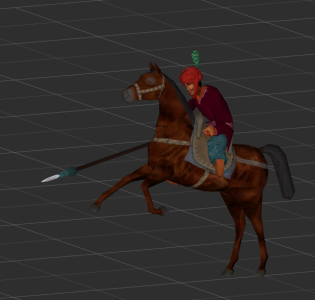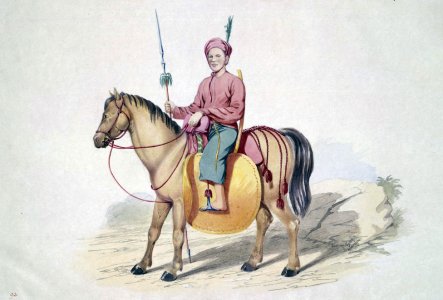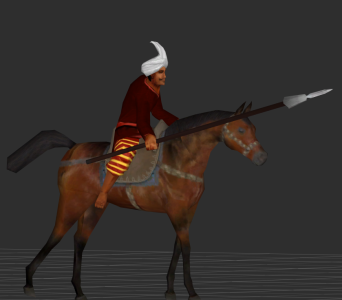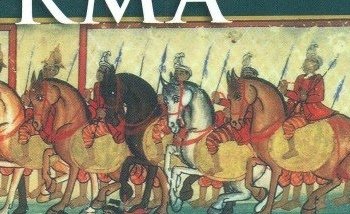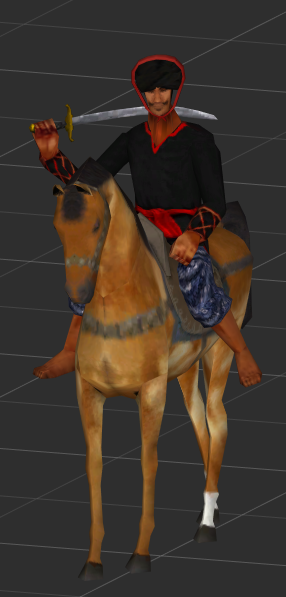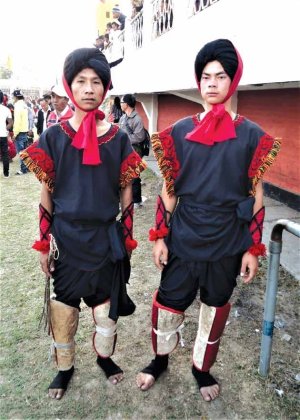Cassay is the Burmese name for the Manipur cavalry, who played an important role in 18th-century Burma. Includes 3 versions of cassay, their skeletons from the Indian hussar made by Bakul and the Turkish hussar in RI, where cassay 1 uses companion_cavalry animation and cassay 2 and 3 use Charlemagne_HeavyCavalry animation.
Brief introduction:
The Cassay Horse is a Burmese appellation given to the Manipur cavalry who were forcibly brought as war captives and employed in various campaigns because of their effectiveness in Burmese wars during the military aggression of the Konbaung dynasty (1752-1885 CE) during which Manipur and Assam was devastated.
In early 1756 the Burmese army of King Alaungpaya defeated the Manipuri army, and ransacked the entire country. Alaungpaya led another expedition in November 1758, this time to place the Burmese nominee to the Manipuri throne. His armies invaded by the Khumbat route in the Manipur valley, and overcame fierce Manipuri resistance at Palel, on their march to Imphal, the Manipuri capital. After Palel, the Burmese entered Imphal without firing a shot. The Konbaung armies brought back many Manipuri cavalry, who became an elite cavalry corps (the Cassay Horse) in the Konbaung army.
E Dalton writes “their enthusiastic love of horses and skills in equitation” have distinguished themselves. The national game was hockey placed on a small bred of pony back from which the British officers adopted it as a “manly amusements of the English in India.”
Highly prized, was the Manipur horseman that Burmese Royalty during the 18th and 19th century maintained their cavalry, with war captives from Manipur.
Konbaung would go on to devastate Manipur, Assam, defeat the British in battles at the outbreak of 1st Anglo-Burmese war (1824-26 CE) till their final defeat at the 3rd Anglo-Burmese war.
Brief introduction:
The Cassay Horse is a Burmese appellation given to the Manipur cavalry who were forcibly brought as war captives and employed in various campaigns because of their effectiveness in Burmese wars during the military aggression of the Konbaung dynasty (1752-1885 CE) during which Manipur and Assam was devastated.
In early 1756 the Burmese army of King Alaungpaya defeated the Manipuri army, and ransacked the entire country. Alaungpaya led another expedition in November 1758, this time to place the Burmese nominee to the Manipuri throne. His armies invaded by the Khumbat route in the Manipur valley, and overcame fierce Manipuri resistance at Palel, on their march to Imphal, the Manipuri capital. After Palel, the Burmese entered Imphal without firing a shot. The Konbaung armies brought back many Manipuri cavalry, who became an elite cavalry corps (the Cassay Horse) in the Konbaung army.
E Dalton writes “their enthusiastic love of horses and skills in equitation” have distinguished themselves. The national game was hockey placed on a small bred of pony back from which the British officers adopted it as a “manly amusements of the English in India.”
Highly prized, was the Manipur horseman that Burmese Royalty during the 18th and 19th century maintained their cavalry, with war captives from Manipur.
Konbaung would go on to devastate Manipur, Assam, defeat the British in battles at the outbreak of 1st Anglo-Burmese war (1824-26 CE) till their final defeat at the 3rd Anglo-Burmese war.

